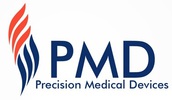 Loading... Please wait...
Loading... Please wait...Categories
Surgical Instruments: Disinfection or Replacement?
Posted on 29th Apr 2015
We live in a world that is filled with medical advances. We have developed equipment and instruments and treatment plans that have helped us address and cure those conditions that are deadly and debilitating. Cutting edge technology and the skills of our practitioners have led the way. But oftentimes something that seems to be so insignificant as to be overlooked can also be the cause of serious problems.
Early 2015 came with not only a promise of a new year of medical breakthroughs but also the discovery of a superbug known as CRE. It is termed a “superbug” because it is resistant to even the most advanced antibiotics. This surfaced during endoscopy procedures in a major California hospital. So far this year, more than 7 patients there have been found to be infected with CRE and 2 succumbed to the illness. The bug carried from one patient to another through crevices in the endoscopes which survived reprocessing procedures.
What does this mean in the world of surgical instruments? The question to be asked is, is any level of disinfecting and sterilizing enough? As a corollary what is the danger of cross contamination during re-processing? The most reliable course of preventative action is to move to single use instruments wherever possible.
According to the guideline for disinfection and sterilization in healthcare facilities published in 2008, there are recommended procedures to disinfect your instruments. One of the most common forms of sterilization is steam sterilization. This is when saturated steam under high pressure sterilizes the surgical tools. There are larger steam sterilization chambers for larger institutions while smaller clinics use portable versions. There is also flash sterilization which is used on unwrapped objects at high temperatures for about 3 to 4 minutes. This is useful but not advisable for tools that will penetrate the human body. While all of these offer a form of sterilization, the efficacy can vary depending upon the type of sterilization that you use.
The most instruments that require attentive re-processing are the most commonly used ones, for example forceps, because they are invasive by nature, and are therefore more susceptible to germs and superbugs. The same applies to other often used instruments such as scissors and clamps, again used to for a number of applications, but often for use with bandages, cloth or even stitching material in the operating room. These and many more carry a significant risk of spreading an incurable infection.
So what is the institution to do? Single use, disposable instruments significantly reduce biologic incidences. The single use instruments that are being manufactured today are exponentially better than they have every been. The strength of the surgical grade steel that is used, the sharpness of the cutting edges, and smoothness of opening and closing provide the practitioner with everything needed for excellent patient care. And the single use nature of the product provides protection against cross contamination. It is also worth noting that in addition to the cost of these instruments being much less than comparable reusable ones the institution will also save on the often hidden cost of reprocessing.
